Deck 4: Section 4: Applications of Differentiation
Question
Question
Question
Question
Question
Question
Question
Question
Question
Question
Question
Question
Question
Question
Question
Question
Question
Question
Question
Question
Question
Question
Question
Question
Question
Question

Unlock Deck
Sign up to unlock the cards in this deck!
Unlock Deck
Unlock Deck
1/26
Play
Full screen (f)
Deck 4: Section 4: Applications of Differentiation
1
Find the points of inflection and discuss the concavity of the function. 
A) inflection point at ; concave upward on
; concave upward on  ; concave downward on
; concave downward on 
B) inflection point at ; concare downward on
; concare downward on  ; concave upward on
; concave upward on 
C) inflection point at ; concave downward on
; concave downward on  ; concave upward on
; concave upward on 
D) inflection point at ; concave downward on
; concave downward on  ; concave upward on
; concave upward on 
E) inflection point at ; concave upward on
; concave upward on  ; concave downward on
; concave downward on 

A) inflection point at
 ; concave upward on
; concave upward on  ; concave downward on
; concave downward on 
B) inflection point at
 ; concare downward on
; concare downward on  ; concave upward on
; concave upward on 
C) inflection point at
 ; concave downward on
; concave downward on  ; concave upward on
; concave upward on 
D) inflection point at
 ; concave downward on
; concave downward on  ; concave upward on
; concave upward on 
E) inflection point at
 ; concave upward on
; concave upward on  ; concave downward on
; concave downward on 
inflection point at  ; concave upward on
; concave upward on  ; concave downward on
; concave downward on 
 ; concave upward on
; concave upward on  ; concave downward on
; concave downward on 
2
Find all points of inflection on the graph of the function  .
.
A)
B)
C)
D)
E)
 .
.A)

B)

C)

D)

E)


3
Find all points of inflection, if any exist, of the graph of the function  . Round your answers to two decimal places.
. Round your answers to two decimal places.
A)
B)
C)
D)
E) no points of inflection
 . Round your answers to two decimal places.
. Round your answers to two decimal places.A)

B)

C)

D)

E) no points of inflection
no points of inflection
4
Locate any relative extrema and inflection points of the function  . Use a graphing utility to confirm your results.
. Use a graphing utility to confirm your results.
A) relative minimum value: ; no inflection points
; no inflection points
B) relative minimum value: inflection point:
inflection point: 
C) relative maximum value: inflection point:
inflection point: 
D) relative minimum value: no inflection points
no inflection points
E) relative maximum value: ; no inflection points
; no inflection points
 . Use a graphing utility to confirm your results.
. Use a graphing utility to confirm your results.A) relative minimum value:
 ; no inflection points
; no inflection pointsB) relative minimum value:
 inflection point:
inflection point: 
C) relative maximum value:
 inflection point:
inflection point: 
D) relative minimum value:
 no inflection points
no inflection pointsE) relative maximum value:
 ; no inflection points
; no inflection points
Unlock Deck
Unlock for access to all 26 flashcards in this deck.
Unlock Deck
k this deck
5
Find all points of inflection of the graph of the function  on the interval
on the interval  . Round your answer to three decimal places wherever applicable.
. Round your answer to three decimal places wherever applicable.
A)
B)
C)
D)
E)
 on the interval
on the interval  . Round your answer to three decimal places wherever applicable.
. Round your answer to three decimal places wherever applicable.A)

B)

C)

D)

E)


Unlock Deck
Unlock for access to all 26 flashcards in this deck.
Unlock Deck
k this deck
6
Find the points of inflection and discuss the concavity of the function  on the interval
on the interval  .
.
A) no inflection points. concave up on
B) concave upward on ; concave downward on
; concave downward on  ; inflection point at
; inflection point at 
C) no inflection points. concave down on
D) concave downward on ; concave upward on
; concave upward on  ; inflection point at
; inflection point at 
E) none of the above
 on the interval
on the interval  .
.A) no inflection points. concave up on

B) concave upward on
 ; concave downward on
; concave downward on  ; inflection point at
; inflection point at 
C) no inflection points. concave down on

D) concave downward on
 ; concave upward on
; concave upward on  ; inflection point at
; inflection point at 
E) none of the above

Unlock Deck
Unlock for access to all 26 flashcards in this deck.
Unlock Deck
k this deck
7
Find all relative extrema of the function  . Use the Second Derivative Test where applicable.
. Use the Second Derivative Test where applicable.
A) relative minimum:
B) relative minimum:
C) relative maximum:
D) relative minimum:
E) relative maximum:
 . Use the Second Derivative Test where applicable.
. Use the Second Derivative Test where applicable.A) relative minimum:

B) relative minimum:

C) relative maximum:

D) relative minimum:

E) relative maximum:


Unlock Deck
Unlock for access to all 26 flashcards in this deck.
Unlock Deck
k this deck
8
Determine the x-coordinate(s) of any relative extrema and inflection points of the function  .
.
A) relative minimum: ; inflection point:
; inflection point: 
B) no relative extrema; inflection point:
C) relative minimum: ; no inflection points
; no inflection points
D) no relative extrema; inflection point:
E) relative maximum: inflection point:
inflection point: 
 .
.A) relative minimum:
 ; inflection point:
; inflection point: 
B) no relative extrema; inflection point:

C) relative minimum:
 ; no inflection points
; no inflection pointsD) no relative extrema; inflection point:

E) relative maximum:
 inflection point:
inflection point: 

Unlock Deck
Unlock for access to all 26 flashcards in this deck.
Unlock Deck
k this deck
9
Determine the open intervals on which the graph of  is concave downward or concave upward.
is concave downward or concave upward.
A) concave downward on
B) concave upward on ; concave downward on
; concave downward on 
C) concave upward on ; concave downward on
; concave downward on 
D) concave upward on
E) concave downward on ; concave upward on
; concave upward on 
 is concave downward or concave upward.
is concave downward or concave upward.A) concave downward on

B) concave upward on
 ; concave downward on
; concave downward on 
C) concave upward on
 ; concave downward on
; concave downward on 
D) concave upward on

E) concave downward on
 ; concave upward on
; concave upward on 

Unlock Deck
Unlock for access to all 26 flashcards in this deck.
Unlock Deck
k this deck
10
Find all points of inflection on the graph of the function  .
.
A)
B)
C)
D)
E)
 .
.A)

B)

C)

D)

E)


Unlock Deck
Unlock for access to all 26 flashcards in this deck.
Unlock Deck
k this deck
11
Find the points of inflection and discuss the concavity of the function  on the interval
on the interval  .
.
A) concave down on ; no points of inflection
; no points of inflection
B) concave downward on ; concave upward on
; concave upward on  ; inflection points at
; inflection points at  and
and 
C) concave upward on ; concave downward on
; concave downward on  ; inflection points at
; inflection points at  and
and 
D) concave up on ; no points of inflection
; no points of inflection
E) none of the above
 on the interval
on the interval  .
.A) concave down on
 ; no points of inflection
; no points of inflectionB) concave downward on
 ; concave upward on
; concave upward on  ; inflection points at
; inflection points at  and
and 
C) concave upward on
 ; concave downward on
; concave downward on  ; inflection points at
; inflection points at  and
and 
D) concave up on
 ; no points of inflection
; no points of inflectionE) none of the above

Unlock Deck
Unlock for access to all 26 flashcards in this deck.
Unlock Deck
k this deck
12
Determine the open intervals on which the graph of the function  is concave upward or concave downward.
is concave upward or concave downward.
A) concave upward: ; concave downward:
; concave downward: 
B) concave upward: ; concave downward:
; concave downward: 
C) concave upward: ; concave downward:
; concave downward: 
D) concave upward: ; concave downward:
; concave downward: 
E) concave upward: ; concave downward:
; concave downward: 
 is concave upward or concave downward.
is concave upward or concave downward.A) concave upward:
 ; concave downward:
; concave downward: 
B) concave upward:
 ; concave downward:
; concave downward: 
C) concave upward:
 ; concave downward:
; concave downward: 
D) concave upward:
 ; concave downward:
; concave downward: 
E) concave upward:
 ; concave downward:
; concave downward: 

Unlock Deck
Unlock for access to all 26 flashcards in this deck.
Unlock Deck
k this deck
13
Find all relative extrema of the function  . Use the Second Derivative Test where applicable.
. Use the Second Derivative Test where applicable.
A) relative max: ; no relative min
; no relative min
B) no relative max; no relative min
C) relative min: ; relative max:
; relative max: 
D) relative min: ; no relative max
; no relative max
E) relative min: ; relative max:
; relative max: 
 . Use the Second Derivative Test where applicable.
. Use the Second Derivative Test where applicable.A) relative max:
 ; no relative min
; no relative minB) no relative max; no relative min
C) relative min:
 ; relative max:
; relative max: 
D) relative min:
 ; no relative max
; no relative maxE) relative min:
 ; relative max:
; relative max: 

Unlock Deck
Unlock for access to all 26 flashcards in this deck.
Unlock Deck
k this deck
14
Find all relative extrema of the function  . Use the Second Derivative Test where applicable.
. Use the Second Derivative Test where applicable.
A) relative max: ; no relative min
; no relative min
B) relative min: ; no relative max
; no relative max
C) relative min: ; no relative max
; no relative max
D) relative max: ; no relative min
; no relative min
E) no relative max or min
 . Use the Second Derivative Test where applicable.
. Use the Second Derivative Test where applicable.A) relative max:
 ; no relative min
; no relative minB) relative min:
 ; no relative max
; no relative maxC) relative min:
 ; no relative max
; no relative maxD) relative max:
 ; no relative min
; no relative minE) no relative max or min

Unlock Deck
Unlock for access to all 26 flashcards in this deck.
Unlock Deck
k this deck
15
Find the points of inflection and discuss the concavity of the function  .
.
A) no inflection points; concave up on
B) no inflection points; concave down on
C) inflection point at x = 16; concave up on
D) inflection point at x = 0; concave up on ; concave down on
; concave down on 
E) inflection point at x = 16; concave down on
 .
.A) no inflection points; concave up on

B) no inflection points; concave down on

C) inflection point at x = 16; concave up on

D) inflection point at x = 0; concave up on
 ; concave down on
; concave down on 
E) inflection point at x = 16; concave down on


Unlock Deck
Unlock for access to all 26 flashcards in this deck.
Unlock Deck
k this deck
16
Find all relative extrema of the function  . Use the Second Derivative Test where applicable.
. Use the Second Derivative Test where applicable.
A) relative max: (1, -2); no relative min
B) no relative max or min
C) relative min: (0, -3); no relative max
D) relative max: (1, -2); relative min: (0, -3)
E) relative max: (0, -3); no relative min
 . Use the Second Derivative Test where applicable.
. Use the Second Derivative Test where applicable.A) relative max: (1, -2); no relative min
B) no relative max or min
C) relative min: (0, -3); no relative max
D) relative max: (1, -2); relative min: (0, -3)
E) relative max: (0, -3); no relative min

Unlock Deck
Unlock for access to all 26 flashcards in this deck.
Unlock Deck
k this deck
17
Determine the open intervals on which the graph of the function  is concave upward or concave downward.
is concave upward or concave downward.
A) concave upward: ; concave downward:
; concave downward: 
B) concave upward: ; concave downward:
; concave downward: 
C) concave upward: ; concave downward:
; concave downward: 
D) concave upward: ; concave downward:
; concave downward: 
E) concave upward: ; concave downward:
; concave downward: 
 is concave upward or concave downward.
is concave upward or concave downward.A) concave upward:
 ; concave downward:
; concave downward: 
B) concave upward:
 ; concave downward:
; concave downward: 
C) concave upward:
 ; concave downward:
; concave downward: 
D) concave upward:
 ; concave downward:
; concave downward: 
E) concave upward:
 ; concave downward:
; concave downward: 

Unlock Deck
Unlock for access to all 26 flashcards in this deck.
Unlock Deck
k this deck
18
Find the point of inflection of the graph of the function  on the interval
on the interval  .
.
A)
B)
C)
D)
E)
 on the interval
on the interval  .
.A)

B)

C)

D)

E)


Unlock Deck
Unlock for access to all 26 flashcards in this deck.
Unlock Deck
k this deck
19
Determine the open intervals on which the graph of  is concave downward or concave upward.
is concave downward or concave upward.
A) concave downward on ; concave upward on
; concave upward on 
B) concave downward on ; concave upward on
; concave upward on 
C) concave upward on ; concave downward on
; concave downward on 
D) concave downward on ; concave upward on
; concave upward on 
E) concave upward on ; concave downward on
; concave downward on 
 is concave downward or concave upward.
is concave downward or concave upward.A) concave downward on
 ; concave upward on
; concave upward on 
B) concave downward on
 ; concave upward on
; concave upward on 
C) concave upward on
 ; concave downward on
; concave downward on 
D) concave downward on
 ; concave upward on
; concave upward on 
E) concave upward on
 ; concave downward on
; concave downward on 

Unlock Deck
Unlock for access to all 26 flashcards in this deck.
Unlock Deck
k this deck
20
Determine the open intervals on which the graph of  is concave downward or concave upward.
is concave downward or concave upward.
A) concave downward on
B) concave upward on ; concave downward on
; concave downward on 
C) concave upward on ; concave downward on
; concave downward on 
D) concave downward on ; concave upward on
; concave upward on 
E) concave downward on ; concave upward on
; concave upward on 
 is concave downward or concave upward.
is concave downward or concave upward.A) concave downward on

B) concave upward on
 ; concave downward on
; concave downward on 
C) concave upward on
 ; concave downward on
; concave downward on 
D) concave downward on
 ; concave upward on
; concave upward on 
E) concave downward on
 ; concave upward on
; concave upward on 

Unlock Deck
Unlock for access to all 26 flashcards in this deck.
Unlock Deck
k this deck
21
Suppose the deflection D of a beam of length L is  where x is the distance from one end of the beam. Find the value of x that yields the maximum deflection.
where x is the distance from one end of the beam. Find the value of x that yields the maximum deflection.
A)
B)
C)
D)
E)
 where x is the distance from one end of the beam. Find the value of x that yields the maximum deflection.
where x is the distance from one end of the beam. Find the value of x that yields the maximum deflection.A)

B)

C)

D)

E)


Unlock Deck
Unlock for access to all 26 flashcards in this deck.
Unlock Deck
k this deck
22
The graph of f is shown. Graph f, f' and f'' on the same set of coordinate axes. 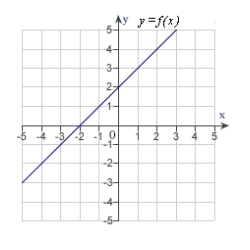
A)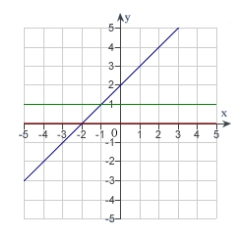
B)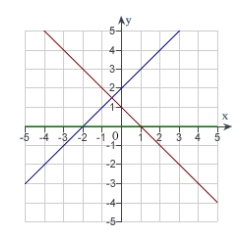
C)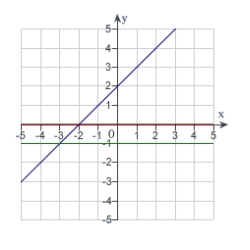
D)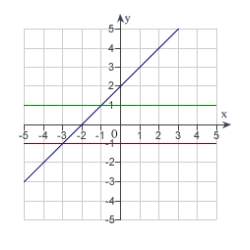
E) none of the above

A)

B)

C)

D)

E) none of the above

Unlock Deck
Unlock for access to all 26 flashcards in this deck.
Unlock Deck
k this deck
23
Suppose a manufacturer has determined that the total cost C of operating a factory is  where x is the number of units produced. At what level of production will the average cost per unit be minimized? (The average cost per unit is C/x.)
where x is the number of units produced. At what level of production will the average cost per unit be minimized? (The average cost per unit is C/x.)
A)
B)
C)
D)
E)
 where x is the number of units produced. At what level of production will the average cost per unit be minimized? (The average cost per unit is C/x.)
where x is the number of units produced. At what level of production will the average cost per unit be minimized? (The average cost per unit is C/x.)A)

B)

C)

D)

E)


Unlock Deck
Unlock for access to all 26 flashcards in this deck.
Unlock Deck
k this deck
24
Find the cubic function of the form  where
where  and the coefficients
and the coefficients  are real numbers, which satisfies the conditions given below. Relative maximum:
are real numbers, which satisfies the conditions given below. Relative maximum:  Relative minimum:
Relative minimum:  Inflection point:
Inflection point: 
A)
B)
C)
D)
E)
 where
where  and the coefficients
and the coefficients  are real numbers, which satisfies the conditions given below. Relative maximum:
are real numbers, which satisfies the conditions given below. Relative maximum:  Relative minimum:
Relative minimum:  Inflection point:
Inflection point: 
A)

B)

C)

D)

E)


Unlock Deck
Unlock for access to all 26 flashcards in this deck.
Unlock Deck
k this deck
25
The graph of f is shown. Graph f, f' and f'' on the same set of coordinate axes. 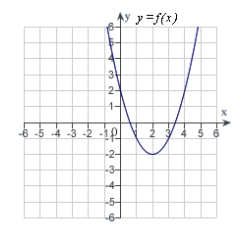
A)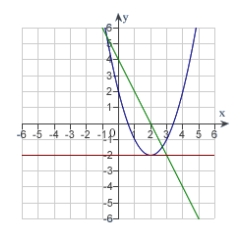
B)
C)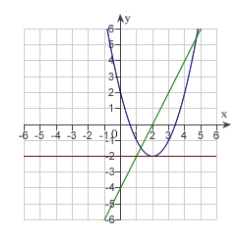
D)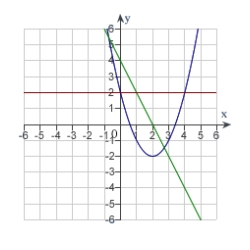
E) none of the above

A)

B)

C)

D)

E) none of the above

Unlock Deck
Unlock for access to all 26 flashcards in this deck.
Unlock Deck
k this deck
26
Determine the x-coordinate(s) of any relative extrema and inflection points of the function  .
.
A) relative minimum: ; no inflection points
; no inflection points
B) relative maximum: ; inflection point:
; inflection point: 
C) no relative maximum or minimum; inflection point:
D) no relative extrema or inflection points.
E) relative minimum: ; inflection point:
; inflection point: 
 .
.A) relative minimum:
 ; no inflection points
; no inflection pointsB) relative maximum:
 ; inflection point:
; inflection point: 
C) no relative maximum or minimum; inflection point:

D) no relative extrema or inflection points.
E) relative minimum:
 ; inflection point:
; inflection point: 

Unlock Deck
Unlock for access to all 26 flashcards in this deck.
Unlock Deck
k this deck



